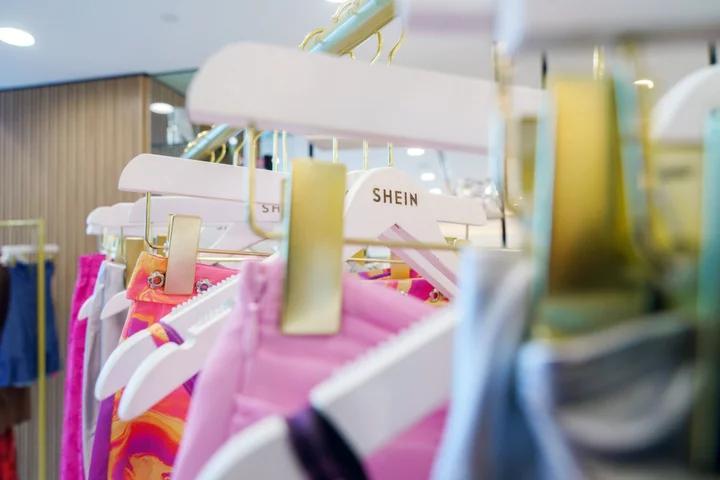Fast-fashion giant Shein will strengthen its presence in Europe and Mexico, including selling more locally made products, in a bid to diversify its China-centric supply chain.
The company will launch an online marketplace in Mexico this month, where products from third-party sellers can be bought alongside Shein’s own brand of $10 dresses and $12 jeans. That’ll be followed by roll outs in Germany, Spain, France and Italy, in the third quarter.
The move builds on existing offerings in Brazil and the US and “reinforces the entire localization strategy worldwide,” Leonard Lin, global head of public affairs, said in an interview at the company’s headquarters in Singapore. “We’ll be prepared to grow the diversification and work with manufacturing suppliers in other countries as well.”
Shein’s pivot to selling products other than its own, including Skechers shoes and Lansinoh mother-care items, brings it closer to what rival Temu offers. The bargain shopping app backed by China e-commerce heavyweight PDD Holdings Inc. has surged in popularity in the US and saw sales top Shein’s in May, with its wide array of items from clothing to socket wrenches.
Read more: US Shoppers Propel China’s Bargain App Temu Past Rival Shein
Lin said Shein’s expansion isn’t a reflection of what competitors are doing and the firm will continue to focus on what it can offer to the young female shoppers that are its core clientele. There’s been a huge increase in demand from customers for more product variety, he said.
China Reliance
Despite its diversification push, the company remains heavily reliant on a vast network of contract manufacturers in China that churn out new designs in about 10 days to meet the fast-changing whims of Western consumers.
While the system has underpinned Shein’s rapid ascent — it far surpasses Zara and H&M in the US fast-fashion market — it’s also left the company mired in the middle of US-China tensions that are rippling across a raft of sectors. The firm has also long faced criticisms that run the entire gamut of its operations from accusations about stealing designs, to links to forced labor and its contribution to overconsumption that’s harming the environment.
Read more: Fashion Giant Shein Cleans Up Its Image With Mega-IPO in Sight
The company has spent millions to address those concerns, including upgrading factories and launching a program that showcases independent designers’ work and gives artists a cut of the profits.
Lin said Shein takes copyright infringement seriously and uses automated and manual checks to review products from suppliers and third-party sellers before offering them for sale. The company also monitors geopolitical developments and is committed to complying with local laws and regulations, he said.
“We take visibility across our entire supply chain seriously and we’re committed to respecting human rights and adhering to local laws in each market we operate in,” Lin said. “We have zero tolerance toward forced labor.”
Supply Shifts
Efforts to shift further away from China are also likely to remove one of its biggest disadvantages: long delivery times. The company already has distribution centers in the US Midwest and California to get items to customers quicker, has opened a warehouse in Toronto and has a facility in Poland.
Local production is being considered in India under a partnership with Mukesh Ambani’s Reliance Industries Ltd. and there are about 1,000 manufacturers of Shein-branded items across Turkey and Brazil. The company wants the South American country, the first to get a Shein marketplace, to have 85% of sales from local producers and merchants by 2026, Lin said.
Shein is already rolling out the red carpet to entice businesses. It will offer training and incentives, like waiving commission for certain periods of time, to potential top vendors. It wants 100,000 sellers across all marketplaces to achieve annual sales of $100,000, with another 10,000 hitting $1 million in three years, according to Lin. Some of the company’s current sellers have managed monthly sales that top $1 million within three months of joining the platform.

